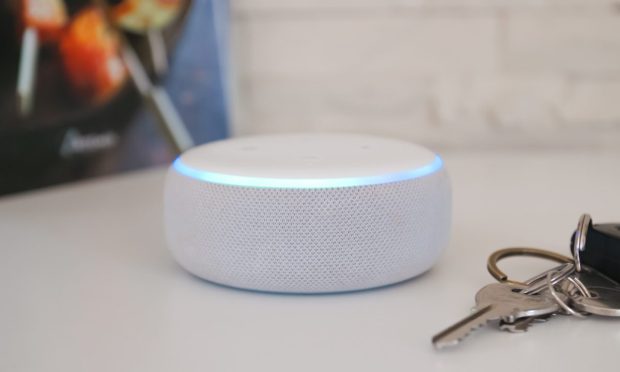Amazon Taps Tech Partnerships to Enter the Restaurant Biz

Amazon is quietly making its way back into the restaurant space through partnerships and investments.
In recent months, the eCommerce giant has been leveraging its voice assistant devices and the central role these can play in consumers’ day-to-day at-home routines to establish a role in the restaurant order placement and tracking processes.
Most recently, the company announced Thursday (May 4) an integration with Uber Eats to enable consumers to check on the status of their delivery orders via their Amazon Echo devices, either opting to receive automatic notifications or asking Alexa for updates.
“Now, customers can settle in for their favorite movie and trust Alexa to let them know when their driver is approaching with their order, or update them if there is a material change to the estimated delivery time,” Mark Yoshitake, GM and Director of Alexa Skills, said in a statement. “It’s yet another example of how Alexa is helping make customers’ lives easier.”
The news follows shortly after Amazon announced a major voice ordering partnership with Panera Bread, enabling the fast-casual brand’s loyalty members to order via Alexa on their Echo devices — a move which, the eCommerce giant implied, may be followed by other similar restaurant partnerships.
“Ordering with Alexa gives customers an easy and natural way to connect with their favorite restaurants at home,” Yoshitake said at the time. “Panera is the first to use our updated Alexa Food Skills API which incorporates state-of the-art techniques in conversational AI to make the ordering process through Alexa more intuitive.”
Indeed, the “Alexa Skills” section of Amazon’s website reveals a handful of other ordering integrations including the ability to reorder with smoothie chain Smoothie King, a coffee-ordering partnership with COFE App, and the ability to place Domino’s orders, which launched way back in 2016.
With these moves, Amazon takes advantage of the rise of voice commerce to insert itself into more of consumers’ connected routines. PYMNTS’ recent study, “ConnectedEconomy™ Monthly Report: The Evolving Digital Daily Edition,” which is based on a February survey of more than 4,000 U.S. consumers, finds that 86 million consumers now use voice assistants each month. Plus, compared to February 2022, 21 million more consumers participated in smart-home-powered activities in February 2023, a 31% increase.
Additionally, it is not only via Alexa that Amazon is establishing a presence in the restaurant industry — it is also entering physical locations with its Amazon One palm payment capabilities. In March, Panera Bread announced that it is rolling out the option to members of its MyPanera rewards program, making the chain the first national restaurant to leverage the technology.
Moreover, the company is also establishing a foothold in the restaurant delivery space after shutting down its own Amazon Restaurants on-demand delivery business in 2019.
Last summer, the company entered into a commercial agreement with Grubhub through which it could take a 2% stake in the aggregator with the potential to grow that to 15% if the partnership performs well for Grubhub. Per the deal, Amazon offered free yearlong Grubhub+ subscriptions to Prime members, much like the eCommerce giant did with British aggregator Deliveroo in 2021.
PYMNTS research shows the most successful brands and retailers are those that can develop relationships with consumers across as many pillars of the ConnectedEconomy™ as possible — how they eat, shop, pay, live, travel, bank, work, communicate, have fun and stay well. By entering into the restaurant space, Amazon supplements its grocery efforts with yet another foray into the Eat pillar, leveraging its existing hold on its customers to further broaden its reach.

